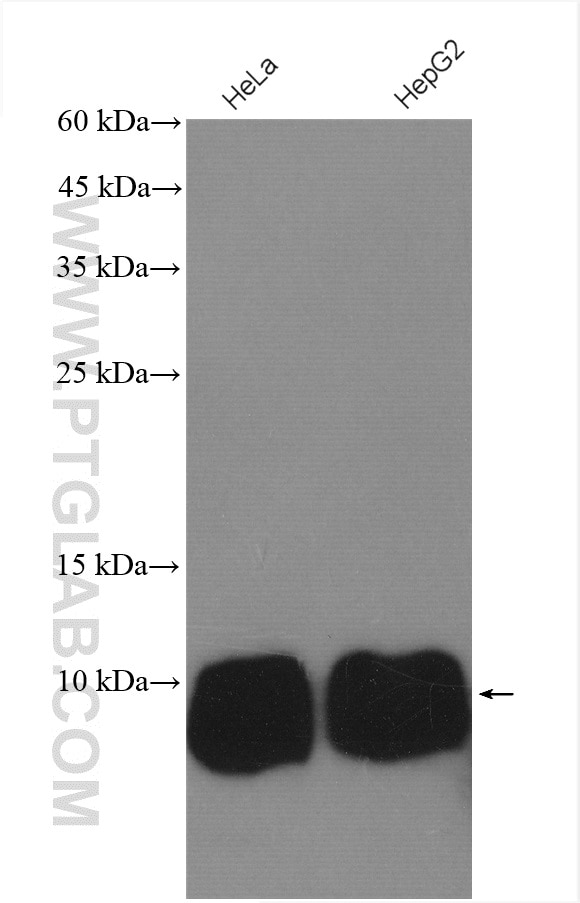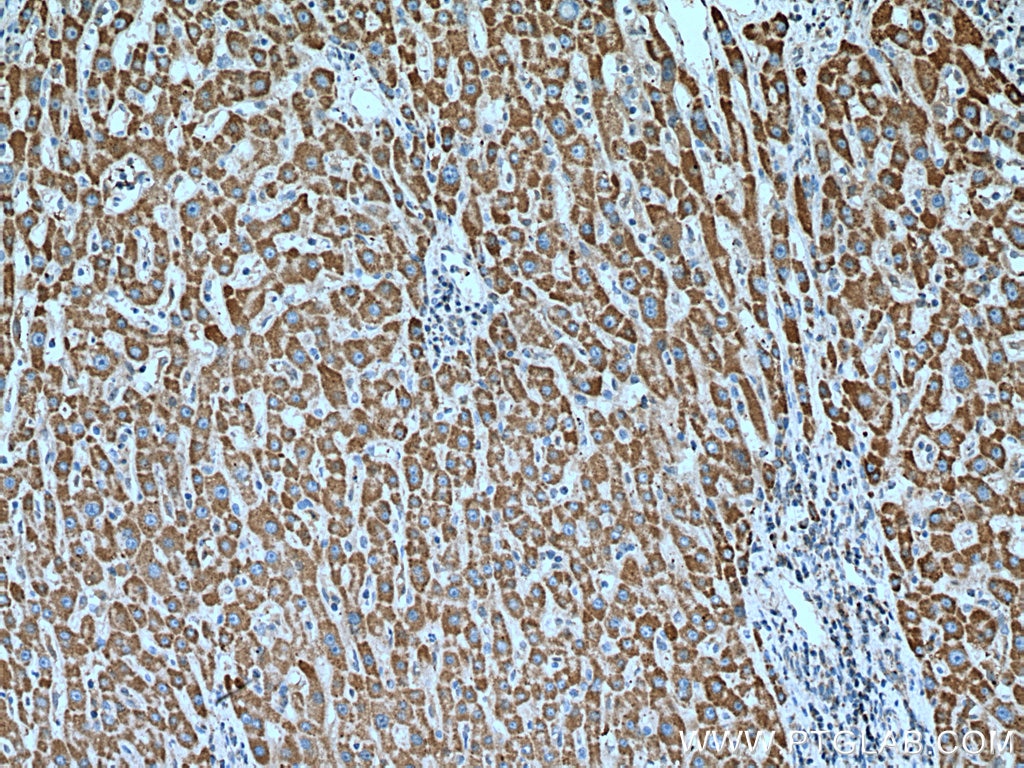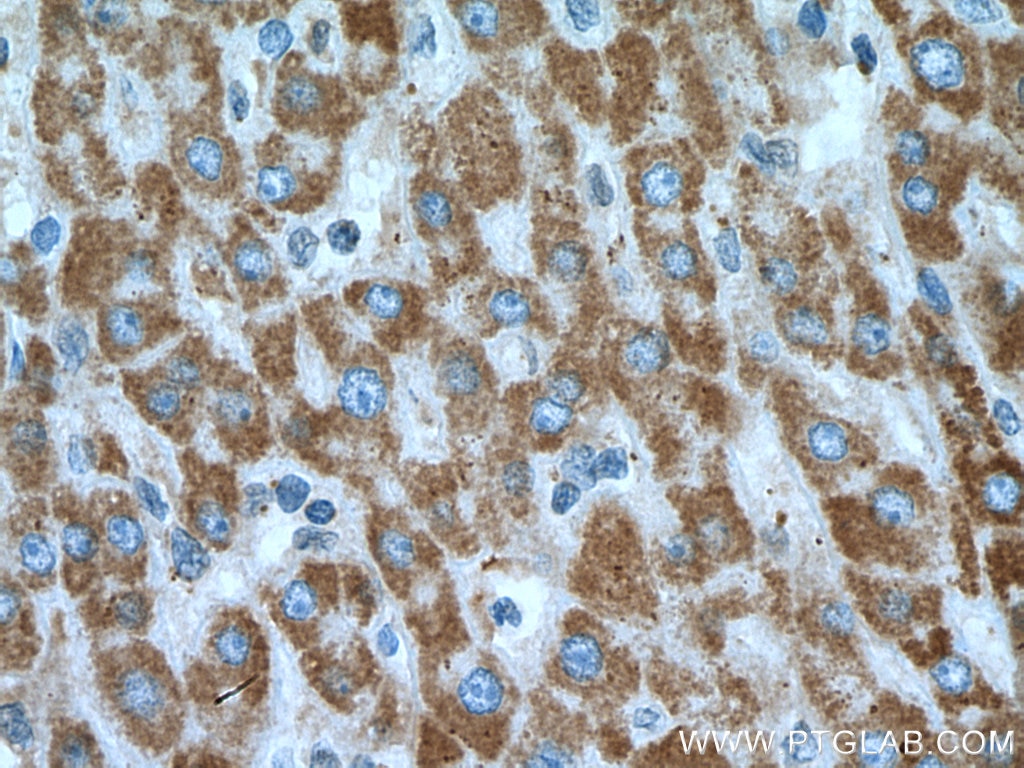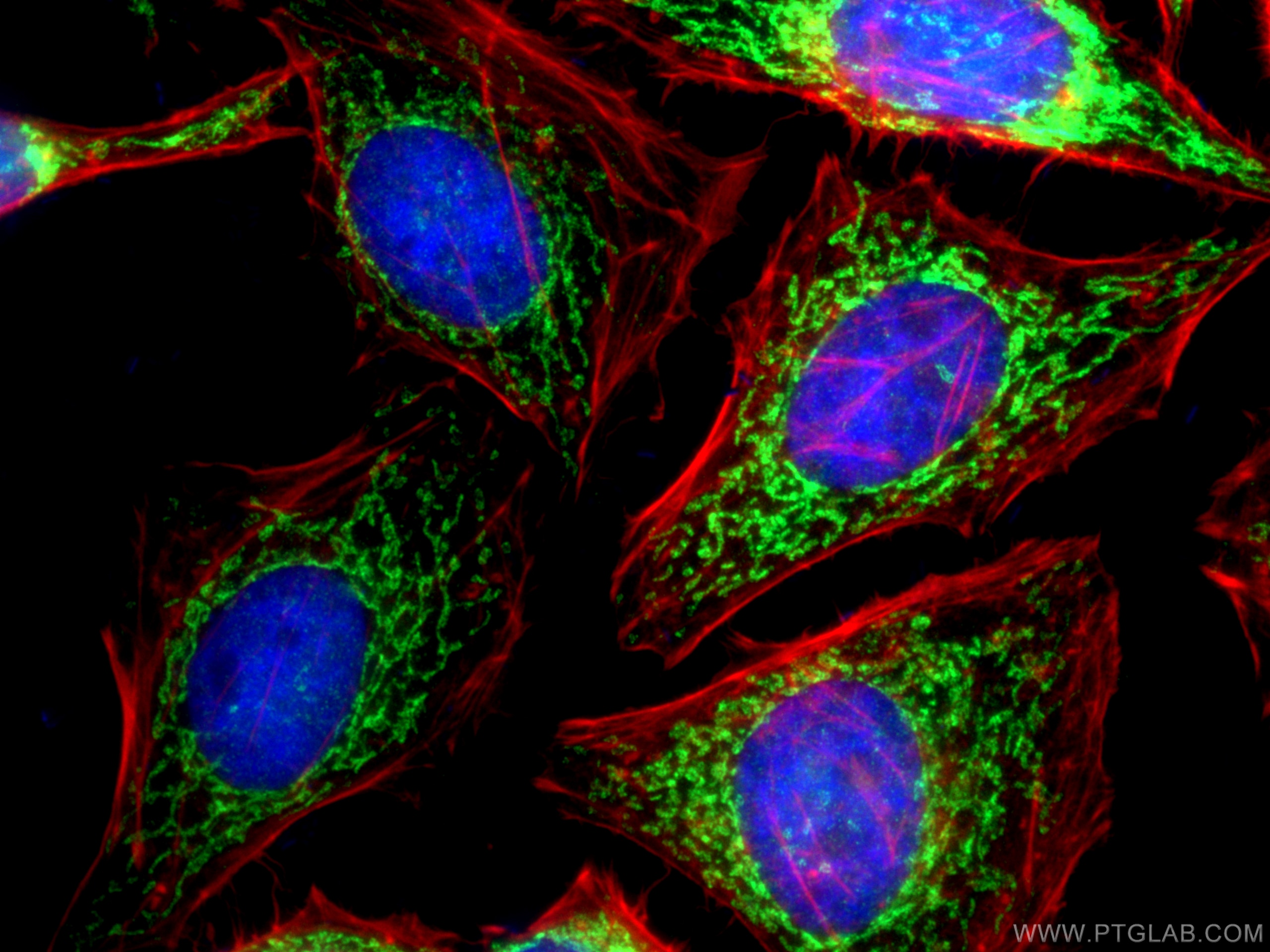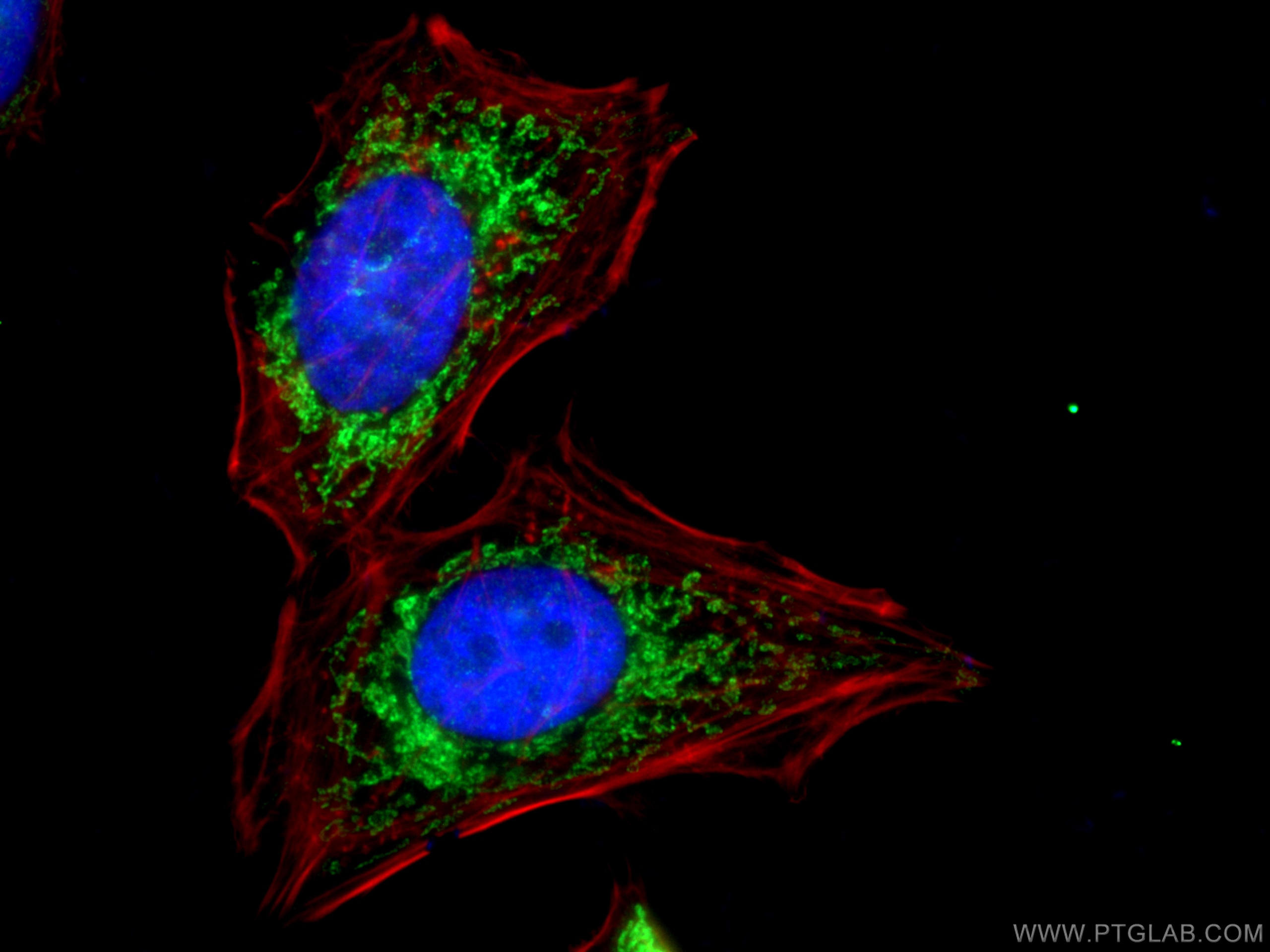TIMM13 Polyklonaler Antikörper
TIMM13 Polyklonal Antikörper für WB, IHC, IF/ICC, ELISA
Wirt / Isotyp
Kaninchen / IgG
Getestete Reaktivität
human
Anwendung
WB, IHC, IF/ICC, ELISA
Konjugation
Unkonjugiert
Kat-Nr. : 11973-1-AP
Synonyme
Galerie der Validierungsdaten
Geprüfte Anwendungen
| Erfolgreiche Detektion in WB | HeLa-Zellen, HepG2-Zellen |
| Erfolgreiche Detektion in IHC | humanes Leberkarzinomgewebe Hinweis: Antigendemaskierung mit TE-Puffer pH 9,0 empfohlen. (*) Wahlweise kann die Antigendemaskierung auch mit Citratpuffer pH 6,0 erfolgen. |
| Erfolgreiche Detektion in IF/ICC | HepG2-Zellen, HeLa-Zellen |
Empfohlene Verdünnung
| Anwendung | Verdünnung |
|---|---|
| Western Blot (WB) | WB : 1:500-1:1000 |
| Immunhistochemie (IHC) | IHC : 1:50-1:500 |
| Immunfluoreszenz (IF)/ICC | IF/ICC : 1:50-1:500 |
| It is recommended that this reagent should be titrated in each testing system to obtain optimal results. | |
| Sample-dependent, check data in validation data gallery | |
Veröffentlichte Anwendungen
| WB | See 4 publications below |
| IF | See 1 publications below |
Produktinformation
11973-1-AP bindet in WB, IHC, IF/ICC, ELISA TIMM13 und zeigt Reaktivität mit human
| Getestete Reaktivität | human |
| In Publikationen genannte Reaktivität | human |
| Wirt / Isotyp | Kaninchen / IgG |
| Klonalität | Polyklonal |
| Typ | Antikörper |
| Immunogen | TIMM13 fusion protein Ag2596 |
| Vollständiger Name | translocase of inner mitochondrial membrane 13 homolog (yeast) |
| Berechnetes Molekulargewicht | 95 aa, 11 kDa |
| Beobachtetes Molekulargewicht | 11 kDa |
| GenBank-Zugangsnummer | BC008607 |
| Gene symbol | TIMM13 |
| Gene ID (NCBI) | 26517 |
| Konjugation | Unkonjugiert |
| Form | Liquid |
| Reinigungsmethode | Antigen-Affinitätsreinigung |
| Lagerungspuffer | PBS mit 0.02% Natriumazid und 50% Glycerin pH 7.3. |
| Lagerungsbedingungen | Bei -20°C lagern. Nach dem Versand ein Jahr lang stabil Aliquotieren ist bei -20oC Lagerung nicht notwendig. 20ul Größen enthalten 0,1% BSA. |
Hintergrundinformationen
TIMM13 gene, also known as TIM13, TIM13B, TIM M13A or TIMM13B, encodes mitochondrial import inner membrane translocase subunit Tim13 belonging to the small Tim family. TIM13 functions as mitochondrial intermembrane chaperone that participates in the import and insertion of some multi-pass transmembrane proteins into the mitochondrial inner membrane. Proteins of the intermembrane space (IMS) of mitochondria are typically synthesized without presequences. TIM13 contains four conserved cysteine residues that bind a zinc ion as cofactor. Import of TIM13 did not depend on the membrane potential or ATP hydrolysis. Upon import into mitochondria TIM13 adopted a stably folded conformation in the IMS.
Protokolle
| Produktspezifische Protokolle | |
|---|---|
| WB protocol for TIMM13 antibody 11973-1-AP | Protokoll herunterladen |
| IHC protocol for TIMM13 antibody 11973-1-AP | Protokoll herunterladen |
| IF protocol for TIMM13 antibody 11973-1-AP | Protokoll herunterladen |
| Standard-Protokolle | |
|---|---|
| Klicken Sie hier, um unsere Standardprotokolle anzuzeigen |
Publikationen
| Species | Application | Title |
|---|---|---|
Cell Stem Cell Disrupting Mitochondrial Copper Distribution Inhibits Leukemic Stem Cell Self-Renewal. | ||
Am J Hum Genet The mitochondrial disulfide relay system protein GFER is mutated in autosomal-recessive myopathy with cataract and combined respiratory-chain deficiency. | ||
Elife Function of hTim8a in complex IV assembly in neuronal cells provides insight into pathomechanism underlying Mohr-Tranebjærg syndrome. | ||
FEBS Lett TIM29 is a subunit of the human carrier translocase required for protein transport. | ||
Mol Genet Genomic Med Functional analysis of a novel mutation in the TIMM8A gene that causes deafness-dystonia-optic neuronopathy syndrome. |
Rezensionen
The reviews below have been submitted by verified Proteintech customers who received an incentive for providing their feedback.
FH Süleyman (Verified Customer) (01-22-2022) | I tested for IMS labelling of mitochondria. I used 1:700 Alexa Fluor 488 secondary antibody. Fixed 4% paraformaldehyde in PBS for 10 minutes at RT and 0.1% Triton X permeabilization. Overnight primary ab labelling at 4 oC. 1 hour secondary ab labelling at RT.
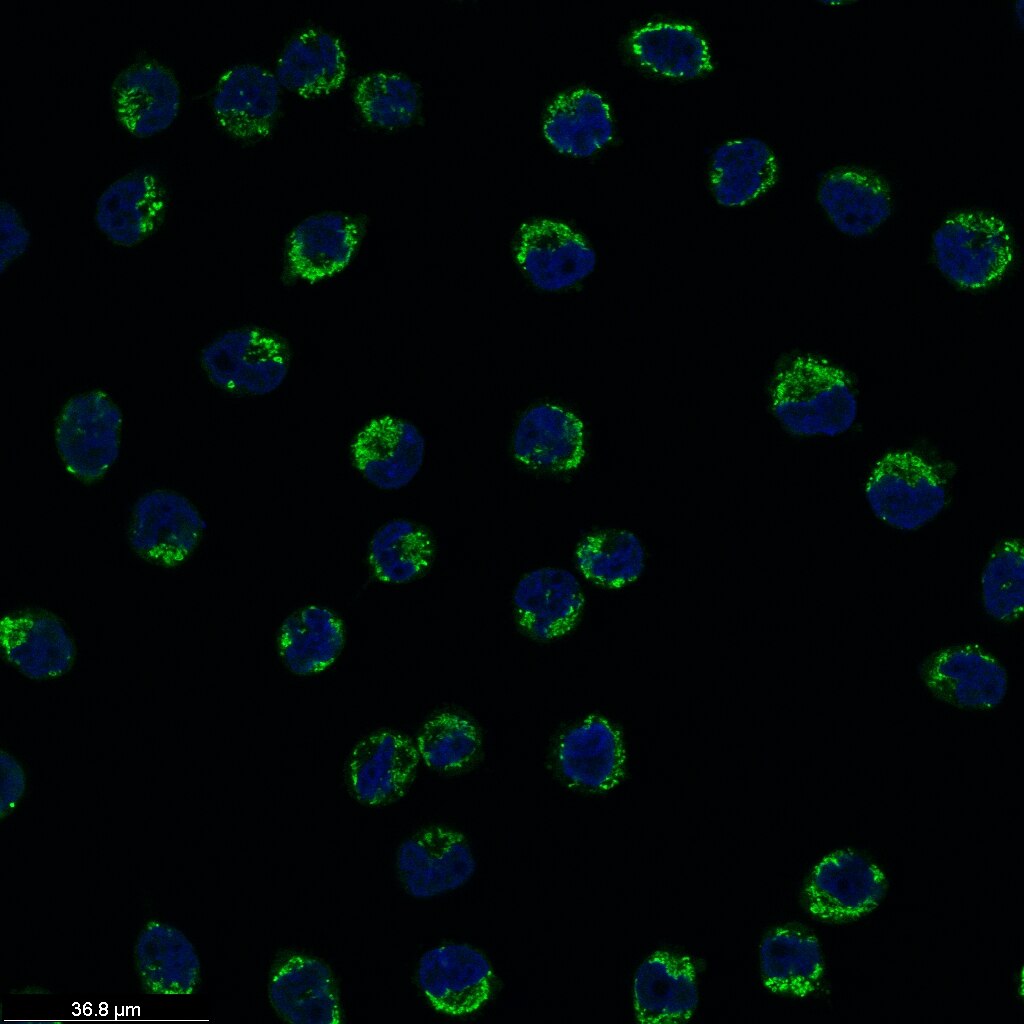 |
